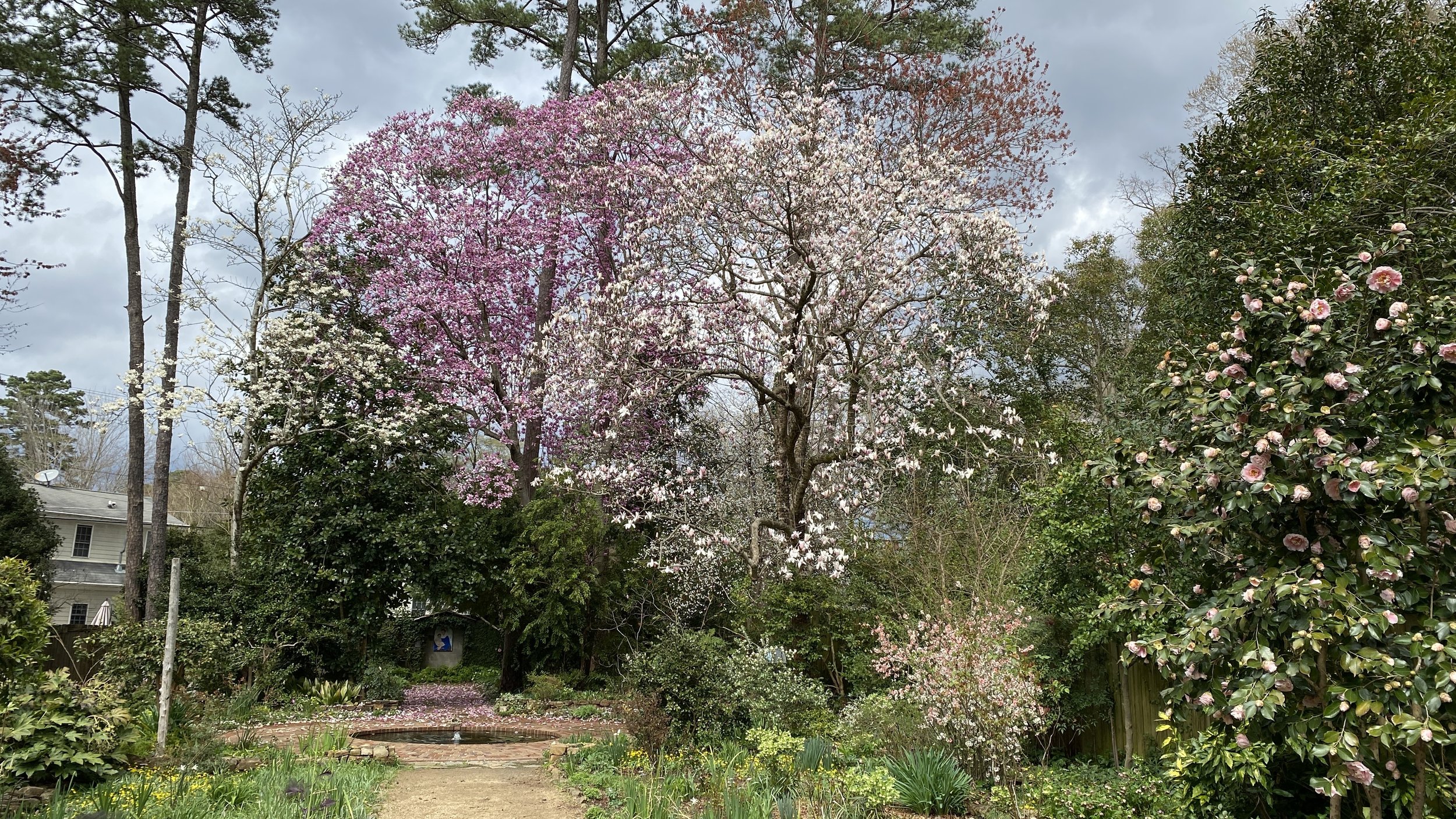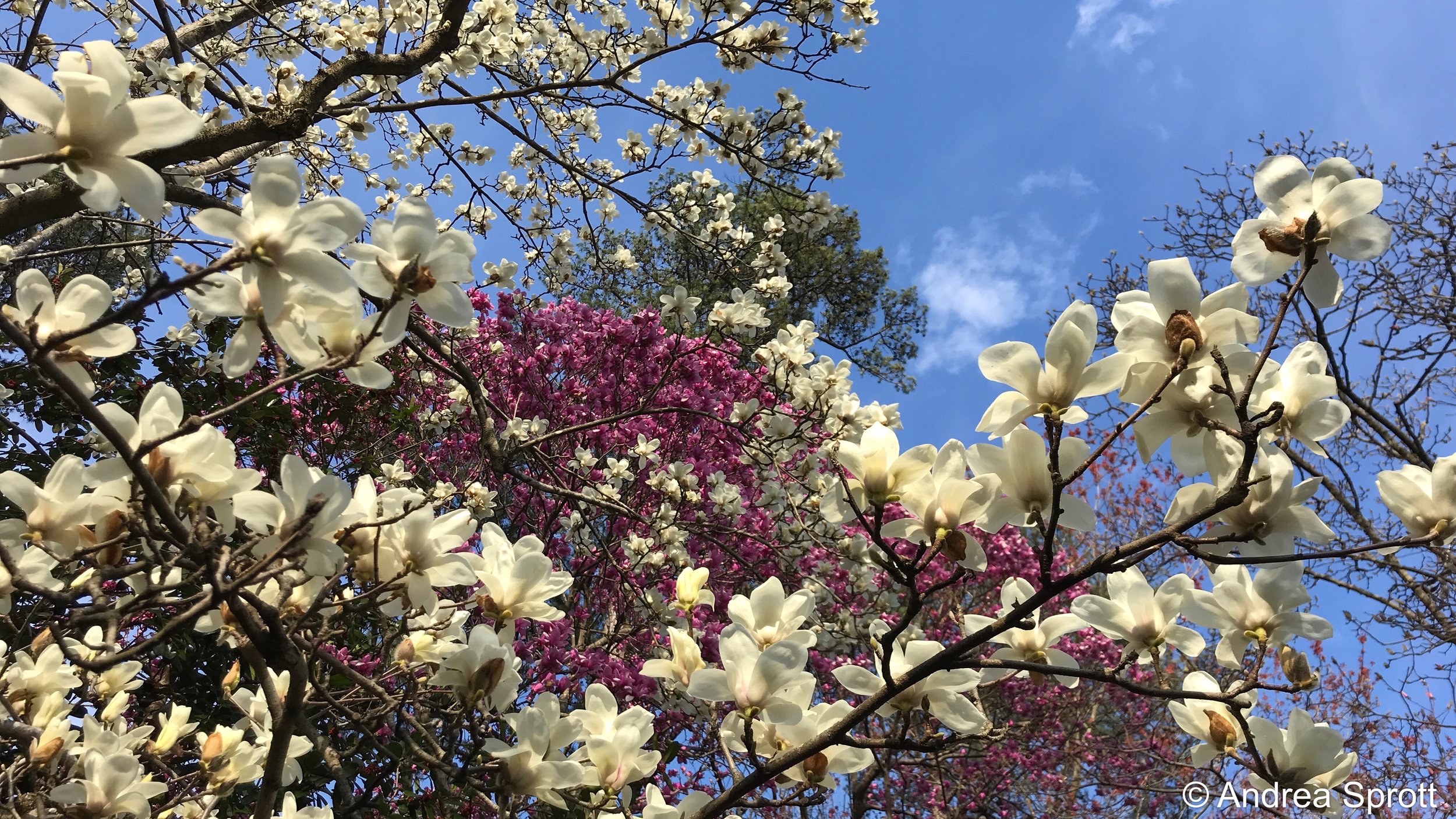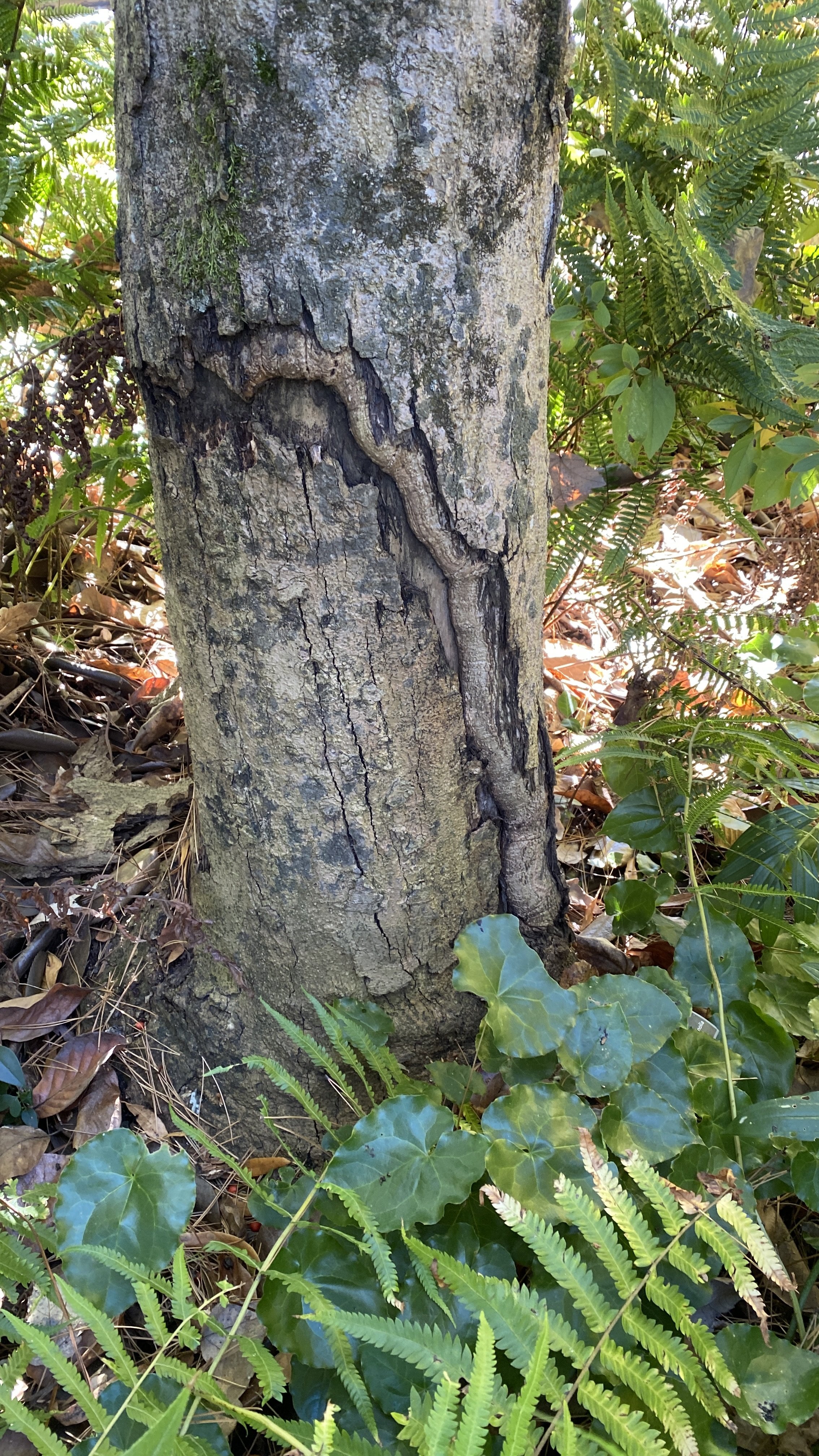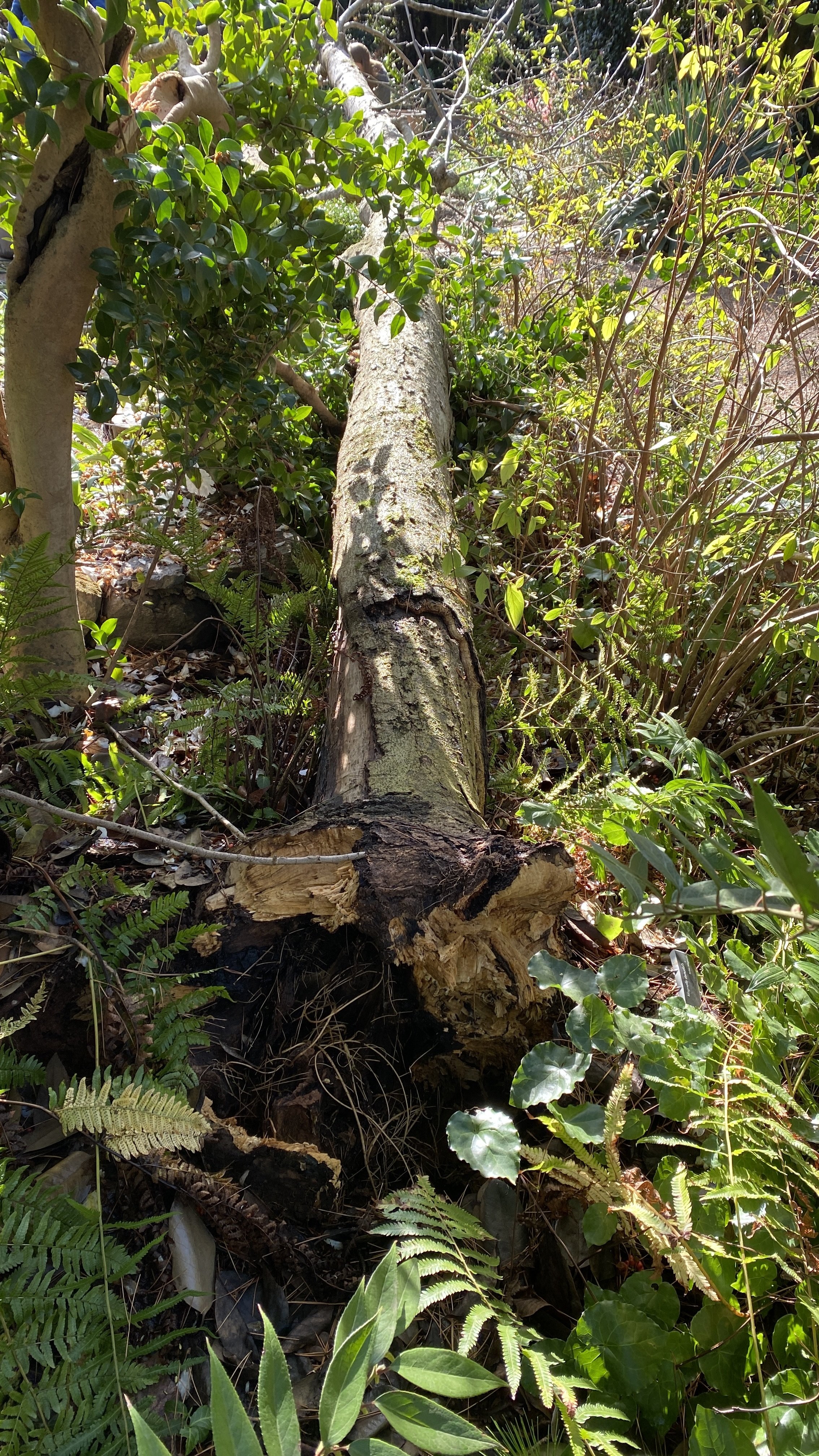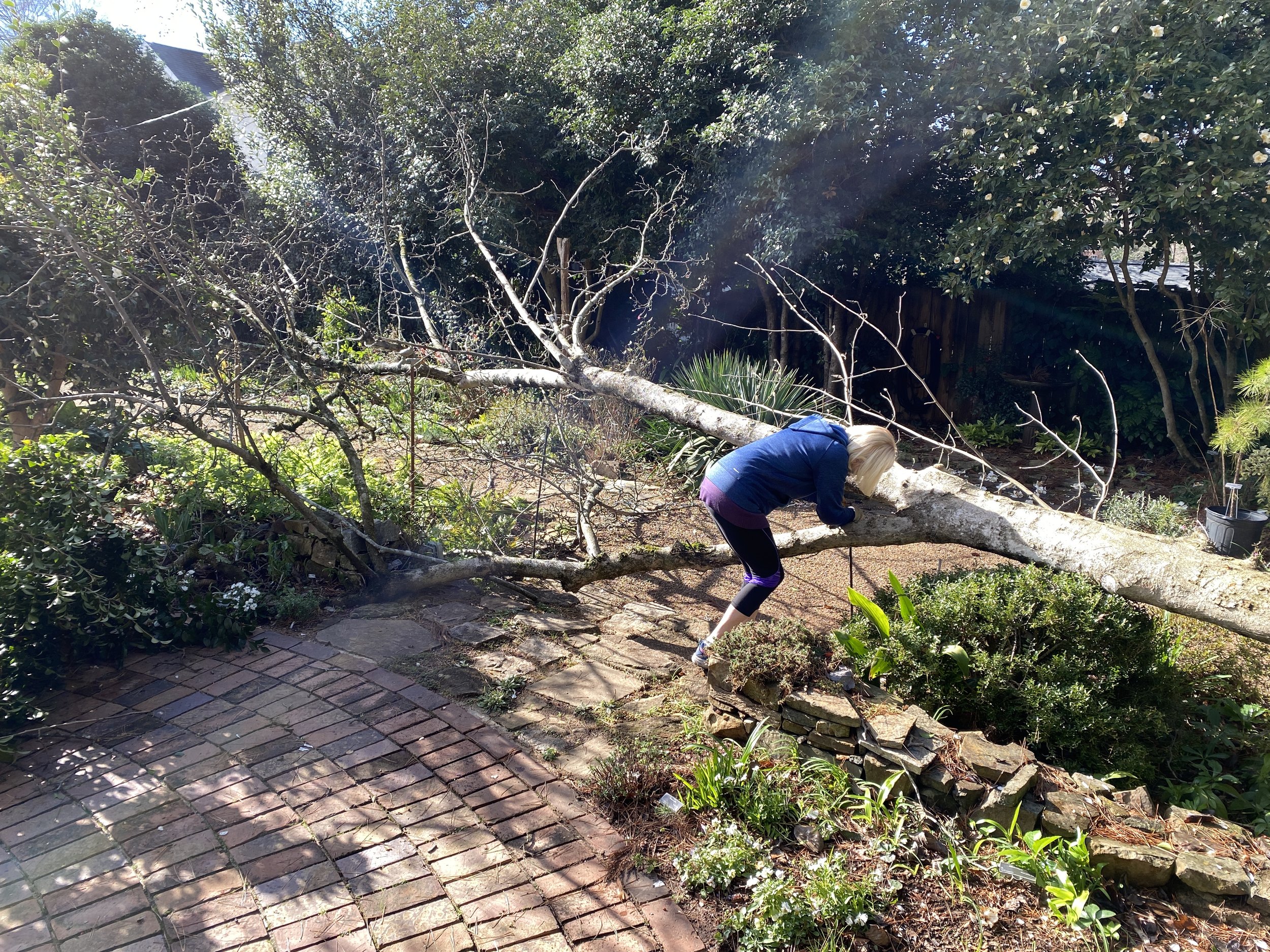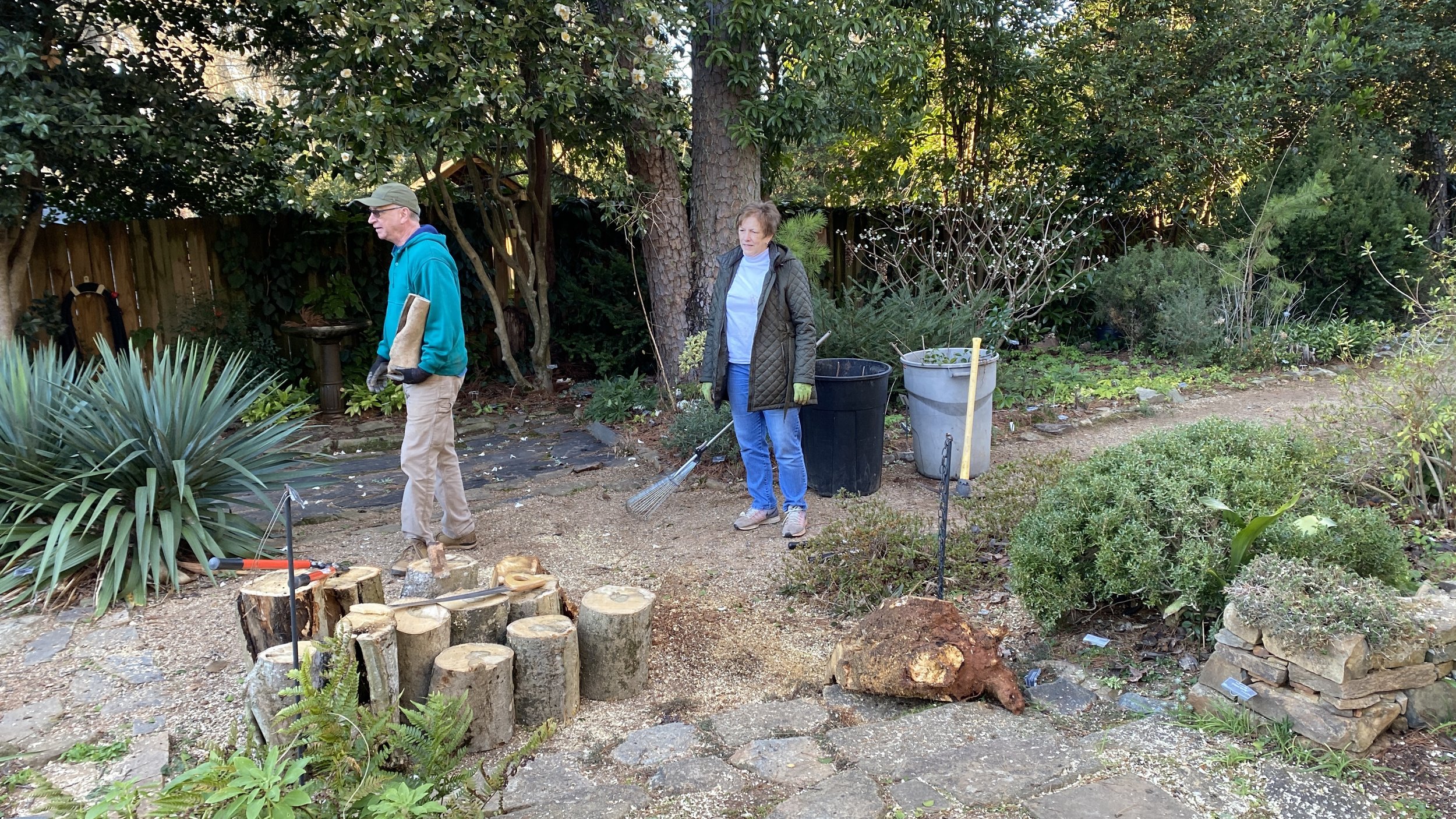The casualties of last winter are a reminder that plants survive much colder weather in places where they are blanketed with snow from fall to spring than in those where they are left exposed to the winds.
Elizabeth Lawrence
A Southern Garden
I know, I know. It’s July; it’s 90°F+ outside with humidity in the tropical rain forest range; this is a weird time to post about anything having to do with winter. Or… is it the perfect time? (I already feel cooler just thinking about a blanket of snow and biting cold winter winds.) This post isn’t really about winter anyway; it’s about learning from the past to help inform the future.
The first winter storm of 2022 whipped through Charlotte on January 2 and 3. It brought with it a few inches of rain and wind gusts up to 40 mph. For this historic landscape, with its many original structural plantings, my greatest concern is wind… especially for the relatively few remaining pine trees. Only six of the 18 pines that once created what Elizabeth Lawrence referred to as the “woods” in the back of her property still stand.
This narrow photo, ca. 1958, looks northwest and shows about 10 pine trees—a few on the neighboring property to the west, but most on Elizabeth Lawrence’s property.
The same view today.
Over the past several years, we have planted several short-leaf pine (Pinus echinata) seedlings to begin the growth cycle to recreate and maintain the pine tree canopy, which, in time, will be as close to original as possible. In the meantime, the remaining six sentinels are at decent risk of blowing down. And with the removal of several large deciduous trees and pines on neighboring lots over the past four years, that risk has grown exponentially. The windbreak that was once there to act as a buffer is no longer.
When our Marketing Coordinator, Stefanie (whose office space is also in Elizabeth Lawrence’s house) texted me the morning of January 3 to let me know a tree had blown down in the garden, I hoped it was not one of the pines. (Please, please, PLEASE, not one of the pines!!) Thankfully—this time—it wasn’t. It was Elizabeth’s Magnolia denudata, the Yulan magnolia, which was slated for removal later that month due to being in rapid decline.
It was still a tough loss. Elizabeth planted her Yulan magnolia prior to 1960, and it’s been a fixture in the garden ever since. More than that, the Magnolia denudata was part of a triumvirate of early spring bloom of deciduous magnolias—I called them “the three tenors”—along with M. ‘Lennei’ and M. x veitchii. It was a rare year when they all bloomed together in harmonious perfection, unscathed by a late freeze that can be so common in the Piedmont of North Carolina.
I found only one source for an in-kind replacement: Singing Tree Gardens Nursery in McKinleyville, California. It was expensive, but already worth every penny, if only for my peace of mind. In early April, the new Magnolia denudata was planted in the same spot as the original. With any luck, in five or so years, we might once again see the three tenors sing in spring.
The new Magnolia denudata is doing quite well; it has put on good new growth and looks happy and healthy.
A question that is ever-present in this garden is whether to try something new when something old goes? A fair query, considering the dynamic quality of this experimental space. It seems to me that Elizabeth was keenly purposeful in her placement of structural elements, and knowing that so much of what structural planting remains today is original, it’s obvious she didn’t change those. With that thinking in mind, the original structural plantings—and their original placement—should remain in perpetuity… or at least as long as possible.
With gardening, Elizabeth was patient in a way only true gardeners are. A garden—and gardening—is a process, not a means to an end. As cliché as it may sound, with every loss in a garden comes an opportunity. And in this garden, looking back informs the future in so many ways.
Yours in Dirt,
Andrea



